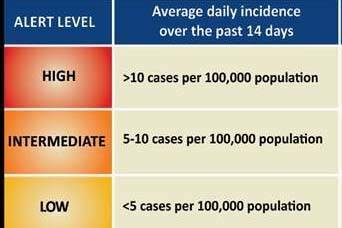Seward schools will continue to operate at medium risk even though the two-week positive case count indicates high-risk levels, the district announced Wednesday.
The Alaska Department of Health and Social Services announced three new cases of COVID-19 in Seward on Wednesday, which per district guidelines, pushed the region’s risk level from “medium” to “high.”
The eastern peninsula is at high risk when there are eight or more cases in the last two weeks, medium risk when there are four to seven cases and low risk when there are three or fewer cases.
The three new cases reported by the state bring Seward’s case total for the last 14 days to nine cases, for an average daily incidence rate of 0.64.
As of Wednesday morning, the Eastern Peninsula’s risk level was still shown as yellow with an alert below saying that the district Medical Advisory Group was evaluating the case data from Oct. 6 and that a decision regarding any change in status would be announced.
“The medical advisory team is watching this closely, and if positive cases are linked to a school, or trend upward Thursday or Friday, an updated decision for next week to operate schools at High Risk and 100% Remote Learning could happen, and will be communicated to staff and families immediately,” the announcement said.
In deciding whether or not to keep schools open, the district analyzed multiple factors, including the 14-day case counts and noted that four cases will be dropped from this count in the next four days, meaning the eastern peninsula will move back into medium risk if no new cases are reported, according to the announcement.
The district’s decision was based on their analysis and the fact that none of the cases involved district schools, the announcement said.
If cases continue to increase on the eastern peninsula this week, there is a “high likelihood” schools will shift to 100% remote learning for the week of Oct. 12, with a decision to be made on Sunday.
On Sept. 28, Seward Elementary School transitioned to remote learning for the week after a second case of COVID-19 was confirmed in the school. The first case was reported on Sept. 22 and the second was reported on Sept. 25.
Reach reporter Ashlyn O’Hara at ashlyn.ohara@peninsulaclarion.com.

